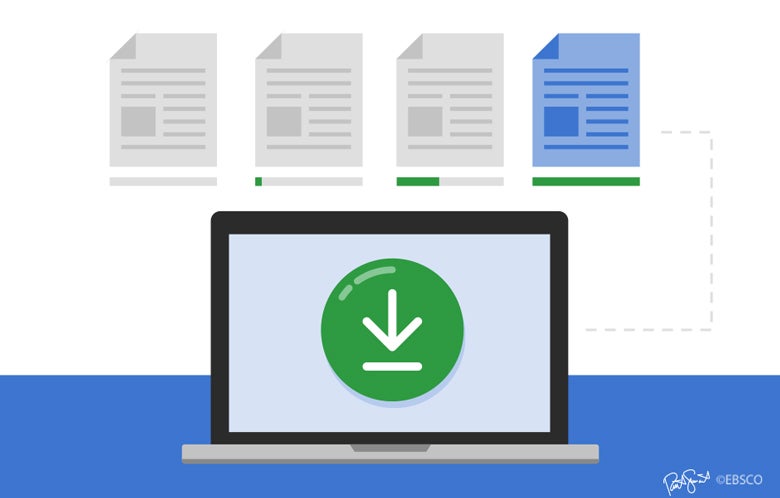In the past, working on an academic research project required searching through multiple print and electronic resources, organizing the relevant content and keeping track of the source, then aggregating the information into one unified, final document. Group research projects, where the complexity magnified by the number of contributors, content, writing styles and opinions, required the diligent coordination of an air traffic controller to ensure a high-quality finished product.
But the academic research process experienced a drastic change in April 2012 with the release of Google Drive. With Google Drive, researchers leveraged one central location for file storage, retrieval and collaboration. The launch of Google Drive changed the research landscape; however, it still lacked capability to help researchers collect content quickly, accurately and efficiently.
Now, with EBSCO eBooks™ Google Drive (which allows for DRM-free e-book chapter downloads) students can research and write at the same time, increasing productivity and saving time while allowing for a smoother research workflow.
With Google Drive, students can download and organize EBSCO eBooks full-text PDF chapters through EBSCOhost® or EBSCO Discovery Service™ (EDS).
With Google Drive, students can download and organize EBSCO eBooks full-text PDF chapters through EBSCOhost® or EBSCO Discovery Service™ (EDS).
Here are three ways EBSCO eBooks can help students improve their academic research workflow with the new Google Drive feature.
1. Collecting and Syncing
Since launching in 2012, there are currently more than 800 million users. Students that use Google Drive can now download and organize EBSCO eBooks full-text PDF chapters through EBSCOhost® or EBSCO Discovery Service™ (EDS). Students can also download DRM-free PDF chapters from the EBSCO eBooks redesigned platform directly to Google Drive, using an Android or iOS device. Files are conveniently stored in an EBSCO file so students can collect research material and access it anywhere — home, school, or on their phone. Google Drive will sync page position and add bookmarks, notes and citations to the cloud so students can pick-up reading where they left off.
2. Citing References
When students cite sources from research materials such as e-book chapters, journal articles, online articles, press releases, blogs and other media, they improve the credibility of their research paper and provide sound organizational structure. When downloading e-book citations, the Google Drive citation tool helps manage a list of references, which helps save time. In addition, the citation tool helps synchronize data across multiple devices, and it can be shared with other students.
3. Sharing and Collaborating
Students can keep their documents safe with Google Drive’s cloud storage backup, which delivers access to their e-book files. Sharing research is easy as well — email attachments are no longer needed and files do not need to be downloaded first. Sections of the paper can be worked on simultaneously — the same copy of a file can be shared among members, which allows for collaboration. Students can view chapters, make comments, ask questions, highlight and edit copy — all which allows for a unified, collaborative workflow.
